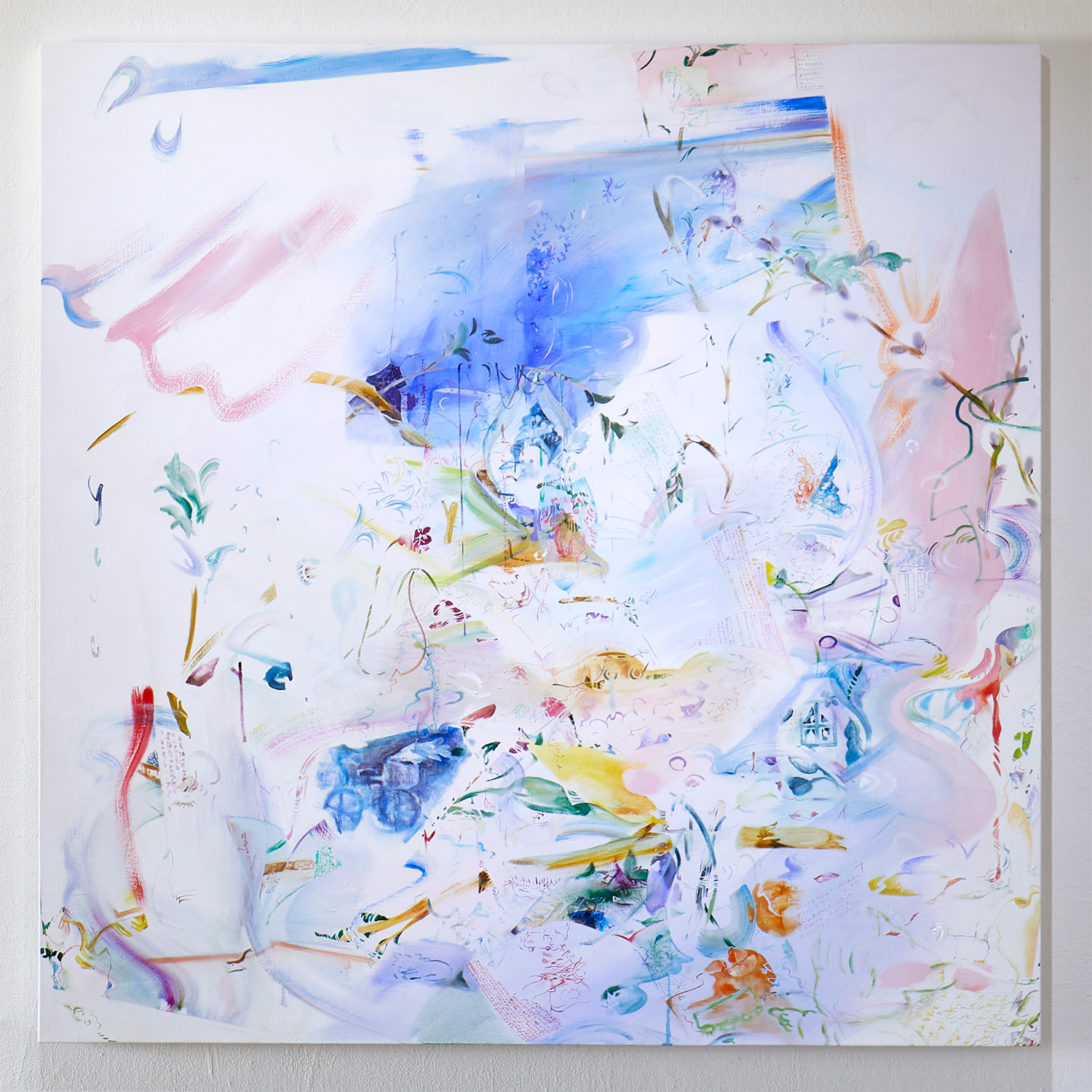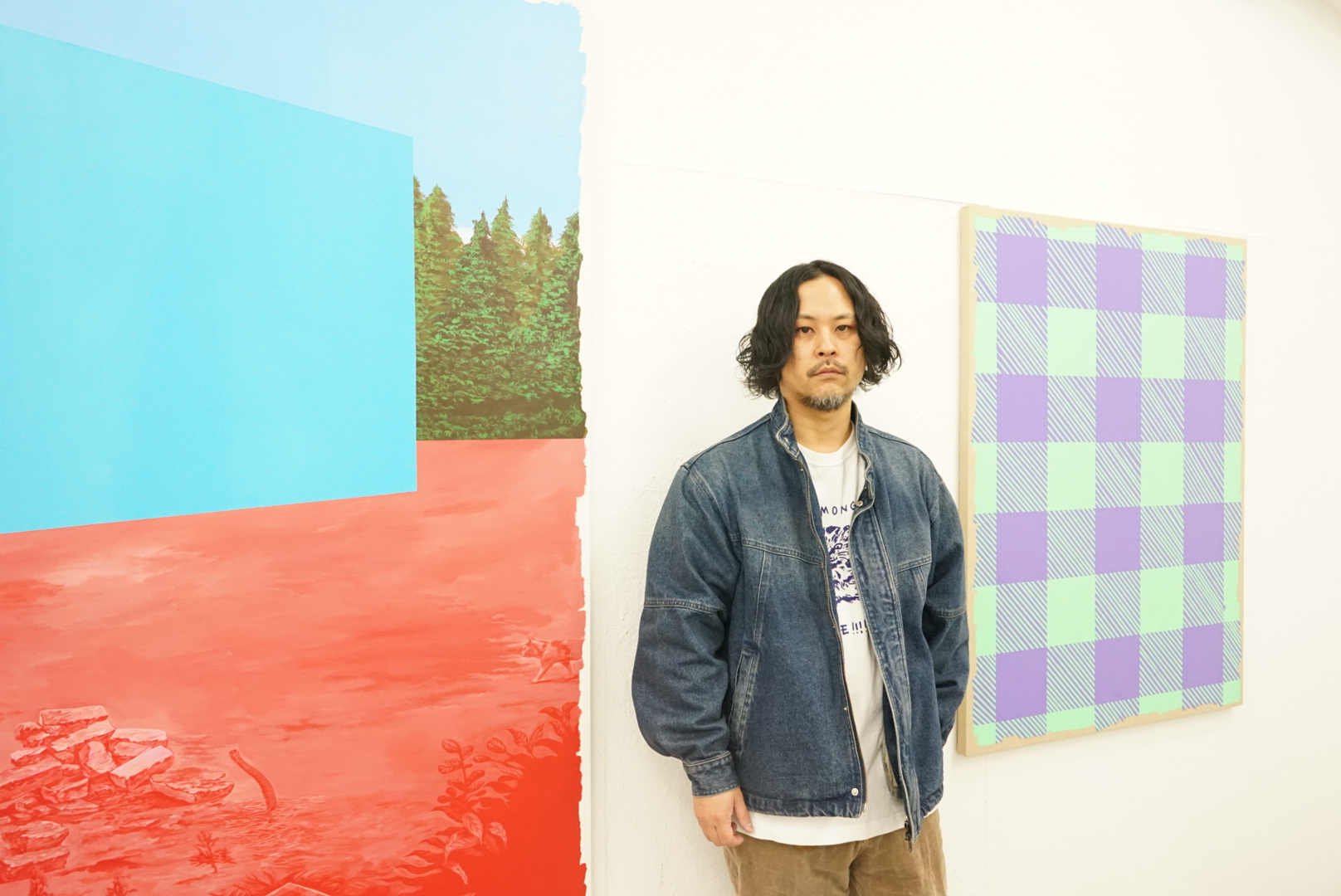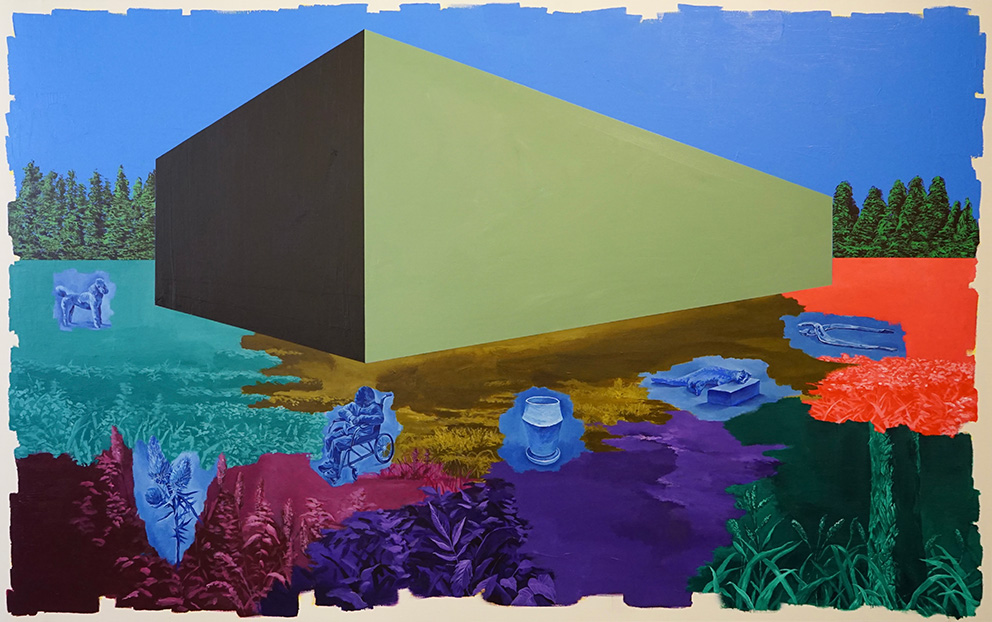Special Exhibition "Idemitsu Art Award Artist Selection 2025"
"Idemitsu Art Award Artist Selection 2025" is a special exhibition aimed at providing ongoing support to artists after they have won or been selected for the Idemitsu Art Award.
New and recent works by three young artists selected by the judges of the "Idemitsu Art Award 2024" will be exhibited at the exhibition venue of the "Idemitsu Art Award Exhibition 2025" to be held in December. For this 14th time, the three artists selected are Mizuki Ashikawa, Haruka Saito, and Ryota Tanaka.
Recommended by Sachiko Shoji: Mizuki Ashikawa

Career
| 1994 | Born in Shizuoka Prefecture |
|---|---|
| 2025 | Completed the doctoral program in the Department of Art and Design at Musashino Art University |
exhibition
| 2019 | TOKAS-Emerging 2019 Solo Exhibition "View from Outside the Range" (Tokyo Arts and Space Hongo, Tokyo) |
|---|---|
| 2022 | 3rd PATinKyoto Kyoto Print Triennale 2022 (Kyoto City Kyocera Museum of Art, Kyoto Prefecture) |
| 2023 | TOKAS Residency Result Exhibition "When Someone's System Turns" (Tokyo Arts and Space Hongo, Tokyo) |
| 2024 | Okishiki Project 14th Phase "Mist World/Unbound" (Former Okishiki Radio Transmitting Station (currently Ryoji Ikeda Studio), Hokkaido) |
| 2025 | "The World of the Tale of Genji: Reading and Writing Day and Night" (Tamashin Museum of Art, Tokyo) |
| 2025 | 4th PATinKyoto Kyoto Print Triennale 2025 Satellite Project Solo Exhibition "Ashikawa Mizuki Exhibition" (Art Zone Kaguraoka, Kyoto Prefecture) |
Awards etc.
| 2018 | Selected for Shell Art Award 2018 |
|---|---|
| 2019 | Art Award Tokyo Marunouchi aatm 2019 Mitsubishi Estate Award |
| 2021 | 8th Yamamoto Kanae Print Exhibition Grand Prize |
| 2022 | 3rd PATinKyoto Kyoto Print Triennale 2022 Nissha Foundation Award |
Upcoming exhibit: "Beyond the Wall"

Technique: lithograph, western paper
70×94.5cm
(Photo: Ryo Adachi)
About the work/production
There are landscapes that suddenly appear before me after going through various processes. At times they hint at the presence of others, and at other times they seem to reflect society or what lies deep within the soul.
I feel that the images produced by lithographs have something in common with the "quality" of such landscapes.
This may be due to the irreversible nature of printmaking, which means that once something is drawn it cannot be easily erased.
"Perhaps no new images will ever appear in this world again." Despite this premonition, he continues to create today, as if he is drawn to something he finds.
In today's world, where we are overwhelmed with images that have a "manipulable" quality, I am instead guided by their "inoperability."
Comment from judge Masamichi
Mizuki Ashikawa has expressed the sensations felt when confronted with a landscape she encounters, the presence floating about the place, or what might be called her mood. Photographs taken at real locations are reconstructed on digital devices, summoning doodle-like two-dimensional motifs as spokespersons for the presence or mood, forming a single image. The plastic digital data becomes a drawing filled with traces of the hand and the texture of the art materials on an irreversible plate, and finally the integrated image and traces are placed on the paper. Please come and see her works, which she has created by facing the reality in front of her and accepting the characteristics of lithography.
Mizuki Takezaki recommended author: Haruka Saito

(Photo: Haruka Akagi)
Career
| 1988 | Born in Nagano Prefecture |
|---|---|
| 2011 | Graduated from Tama Art University, Faculty of Art, Department of Painting, Major in Oil Painting |
exhibition
| 2014 | "Strata of Memory" (Kougen Museum of Art, Koumimachi, Nagano Prefecture) |
|---|---|
| 2017 | Solo Exhibition AP#2.01 "If undrinkable juice were not real, we would not exist in this world in this form" (The Museum of Modern Art, Saitama, Saitama Prefecture) |
| 2020 | Tokyo Metropolitan Art Museum Selection Group Exhibition 2020 "A Drawn Pool with Suntan Marks" The Suntan Group (Tokyo Metropolitan Art Museum, Tokyo) |
| 2022 | Letter/Art/Project "Todoku" Exhibition (Shibuya Koen-dori Gallery, Tokyo) |
| 2024 | "Breathless Pieces, Breathing Pieces" by Suntan Group (Art Center Ongoing, Tokyo) |
| 2024 | "Sign" (Up & Coming, Tokyo) |
| 2025 | Solo exhibition "Knock from the Back" (Black Cube, Kanagawa Prefecture) |
Awards etc.
| 2011 | Tokyo Wonder Wall Tokyo Wonder Wall Award Winner |
|---|---|
| 2015 | Art Olympia Executive Committee Special Award |
| 2016 | Selected for Shell Art Award 2016 |
Reference work: "Snow melts in one direction/floats in all directions"

Technique: Oil on canvas
130.3×130.3cm
(Photo: Takafumi Sakanaka)
About the work/production
From the position that "time does not actually flow; it is merely the sum of gravity and the kinetic energy of objects that is conveniently called time," he creates paintings, sculptures, installations, videos, and other works that link events to the structure of time and space.
It's not that the snow melts because time passes, but rather that we know the passage of time because the snow melts.
I often wander around the act of drawing, remembering things that I have seen but that are no longer in front of me and that I can only relate to by remembering them. However, for this painting, I also drew things that no one has seen but that I have experienced by reading them, such as "the exterior of the train my friend was riding" and "my profile as I speak on the phone," written in my friend's diary (on a snowy day). I cannot see my profile directly in the three-dimensional space-time in which I live my daily life. But I can draw it. The winds that turn the pages of the painting, which was created by traveling through space-time, blow in all directions as I wrote the events I depicted in my diary, then painted the pages of the diary on the surface of a ceramic piece and fired it, and then painted that ceramic piece into a painting.
Comment from judge Takezaki
Haruka Saito uses a variety of approaches, including painting, sculpture, installation and video, to reconstruct time and space based on her own experiences and memories.
The motifs and atmospheres expressed on the screen are all derived from things seen or heard in daily life, and things experienced directly or indirectly, and are arranged in a diverse and harmonious way on the surface of the painting. Words from diaries and memos in which Saito writes down his daily thoughts and feelings are also scattered throughout the screen as one of the elements that make up his works. In recent years, he has produced ceramic works painted on both sides, and also works in which he has painted these into the painting surface. It will be exciting to see what kind of worlds Saito will create in the future that go beyond the dimensions of the real world while still being based on his own reality.
Itaru Oura Jury Recommended Author: Ryota Tanaka

Career
| 1983 | Born in Saitama Prefecture |
|---|---|
| 2008 | Graduated from Tama Art University, Faculty of Art, Department of Painting, Major in Oil Painting |
exhibition
| 2022 | "Kokado Format" project: Gel Alternative (Space Jellyfish, Kanagawa Prefecture) |
|---|---|
| 2022 | "PALALLEL eg2" (HANSOTO, Shizuoka Prefecture) |
| 2023 | "The 34th Mihama Art Exhibition" (Mihama Town Lifelong Learning Center Navias, Fukui Prefecture) |
| 2024 | "Pipuru 01 Watching the Waves" Organized by Pipuru (Chatei Gallery, Tokyo) |
| 2025 | "Midlight_And" (TURNER GALLERY, Tokyo) |
| 2025 | "OUT OF THE BLUE" (STUDIO BACKPACK, Saitama Prefecture) |
| 2025 | "Magical Mystery Fuchu" (LOOP HOLE, Tokyo) |
Awards etc.
| 2018 | Shell Art Award 2018, Shima Atsuhiko Jury Prize Winner |
|---|---|
| 2021 | FACE2021 Selected |
| 2023 | Selected for the 34th Mihama Art Exhibition |
Reference work: "Intersect, do not intersect, intersect, do not intersect, intersect, do not intersect, intersect, do not intersect, intersect, do not intersect"

Technique: Acrylic paint, canvas
112.0×178.0cm
About the work/production
People live in a continuous space. There is no point in fearing discrepancies, and I hope for a world where we can understand that there are discrepancies. I don't want to neglect all kinds of observations. When a collection of experiences spreads into any space, an indefinite landscape appears as an image. That landscape is a state of monism in which everything, including myself, is linked. If it looks like a landscape even if the perspective and contrast of perspective are broken, then a landscape that only has lines (like surfaces) and holes (like) perfect circles is also an indefinite landscape. It's just that the way of proposing it is different. In this way, I express abstract paintings that look like landscapes and landscapes that look like abstract paintings. No matter what the form is, no matter what the object is, I just apply paint to the screen, give it mass, believe in the illusion, enjoy it, suffer, and present it before my eyes. I also always leave a margin on the canvas. It's like making the end of the painting (image) clear and saying that reality begins here (the margin). In other words, while pointing to "here," the infinite and the finite overlap inside and outside of it. I am always somewhere.
Recommendation comment from judge Oura
Ryota Tanaka's paintings, which depict a motif reminiscent of a huge building in the center of the picture plane, are called "landscape paintings" for the time being. However, the depiction of the trees in the background and the objects depicted in various places are concrete, and although they are linked to Tanaka's own experiences and interests, they are never bound together into a single narrative. Separately from this, Tanaka is also working on a series of "abstract paintings" that are made up of regularly overlapping lines vertically and horizontally. In a series of works entitled "QED," the artist writes the title on the back when he feels he is satisfied with the work, and it is completed = "proof completed."
The two genres of work, tentatively labeled "landscape painting" and "abstract painting," seem to be based on different logics, but they secretly intersect. While painting something like a building, the artist is intent on creating a highly abstract picture in which two rectangles relate to all the elements on the screen, while at the same time finding depth and space like a landscape in the accumulation of regular lines. In both types of painting, the state of the other overlaps, and grasping this dynamic state is Tanaka's current realization of "QED" = "this is what needs to be shown," and this exhibition will be an opportunity to share this.